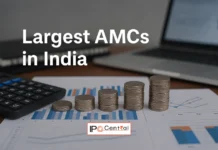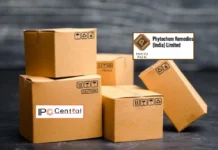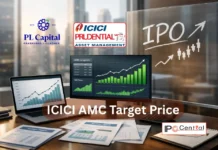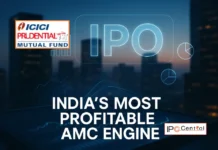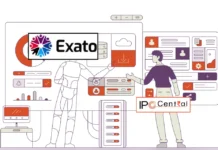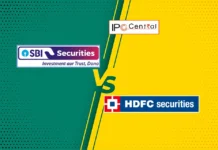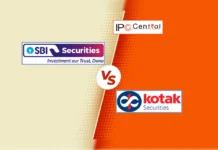Kedaara Capital-backed Aavas Financiers is set to launch its IPO on 25 September that will raise as much as INR1,734.1 crore through a mix of fresh shares and an Offer For Sale (OFS). The IPO will involve sale of new shares worth INR400 crore while existing shareholders plan to sell 16,249,359 shares worth up to INR1,334.1 crore. The issue is priced in the range of INR818 – 821 per share and investors can place their bids in multiples of 18 shares. Aavas Financiers was started by Sushil Kumar Agarwal who is also the person behind the AU Small Finance Bank. The company was earlier known as AU Housing Finance and since it comes from the house of AU, investors will understandably have high expectations from it. Some of this is reflected in the strong premium the company is commanding in the grey market. This Aavas Financiers IPO Review aims to find out if the company deserves this reputation.
Aavas Financiers IPO details | |
| Subscription Dates | 25 – 27 September 2018 |
| Price Band | INR818 – 821 per share |
| Fresh issue | INR400 crore |
| Offer For Sale | 16,249,359 shares (INR1,329.2 – 1,334.1 crore) |
| Total IPO size | INR1,729.2 – 1,734.1 crore |
| Minimum bid (lot size) | 18 shares |
| Face Value | INR10 per share |
| Retail Allocation | 35% |
| Listing On | NSE, BSE |
Aavas Financiers IPO Review: Fresh + OFS, Kedaara Capital to partly exit
As mentioned above, the IPO will raise INR400 crore which will be used towards augmenting the capital base of the company.
In addition, 16,249,359 shares will be sold by existing shareholders and this list includes the likes of Lake District Holdings, Partners Group Private Equity Master Fund LLC, Partners Group ESCL, Kedaara Capital, Sushil Agarwal and Vivek Vig. The biggest chunk of shares will be offered by Lake District Holdings (8,815,439 shares) while Partners Group ESCL plans to sell 4,281,907 shares. Lake District Holdings and Partners Group ESCL hold 47.83% and 23.23% equity in the company, respectively and will pare down shareholding by 11.96% and 5.81%, respectively. Kedaara Capital AIF 1 will sell 236,339 shares while Sushil Agarwal will offer 911,564 shares. It is worth highlighting that Lake District Holdings is a subsidiary of Kedaara Capital.
The company was initially promoted by AU Financiers which is now known as AU Small Finance Bank. In connection with its conversion to a small finance bank, AU Small Finance Bank sold 90.10% of the outstanding equity interest in the housing finance unit to the above mentioned investors in June 2016.
Aavas Financiers IPO Review: Contiguous on-ground expansion
The company’s operations are spread in eight states – Rajasthan, Maharashtra, Gujarat, Madhya Pradesh, Haryana, Uttar Pradesh, Chhattisgarh and Delhi. As of 30 June 2018, the company had 166 branches in 95 districts with majority of branches in Rajasthan, Maharashtra, Gujarat, Madhya Pradesh. Aavas Financiers has a strategy of contiguous expansion and thus, plans to further enhance its presence in these states before expanding in newer once. Important among its plans is the move to increase the number of branches from 166 to 300 over the next five years.
Its customer base is primarily low and middle income self employed customers in semi-urban and rural areas in India. The company offers customers home loans for the purchase or construction of residential properties, and for the extension and repair of existing housing units. Average sanctioned amount of its home loans and other mortgage loans was INR8.7 lakh (INR0.87 million) and INR8 lakh (INR0.80 million).
As of 30 June 2018, 61.22% of its gross loan assets were from customers who belonged to the economically weaker section and low income group, earning less than INR50,000 per month and 36.27% of its gross loan assets were from customers who were new to credit. Nearly 64% of gross loan assets were from self-employed customers.
Aavas Financiers IPO Review: From strength to strength
As seen from the table below, the company has managed to post revenue growth in all the last five years and the growth has been pretty strong. Topline grew from INR54.3 crore in FY2014 to INR457.2 crore in FY2018, that’s almost nine times in five years. Costs have also risen but not in the same magnitude and thus, profits have grown multi-fold in the same time frame. Nearly 15 times to be precise! Now this is breakneck speed and usually such growth comes by compromising on quality.
Nevertheless, Aavas Financiers has managed to do it without a significant increase in NPAs. Gross NPAs as percentage of Gross Advances stood at 0.34% in FY2018 and the highest it touched in the last five years was 0.79% in FY2017. Along the way, the company’s profitability has improved from 11.6% to 20.3%. These are impressive figures.
Aavas Financiers’ standalone financial performance (in INR crore) | ||||||
| FY2014 | FY2015 | FY2016 | FY2017 | FY2018 | ||
| Total revenues | 54.3 | 103.6 | 190.8 | 305.5 | 457.2 | |
| Total expenses | 44.9 | 74.8 | 140.9 | 217.9 | 315.5 | |
| Profit after tax | 6.3 | 19.1 | 32.8 | 57.1 | 92.9 | |
| Net margin (%) | 11.6 | 18.4 | 17.2 | 18.7 | 20.3 |
Aavas Financiers IPO Review: Lowest NPAs, but is that enough?
ICRA says these were the lowest NPA figures among affordable housing finance companies that had assets under management between INR25 billion and INR200 billion. Net NPA to Net Advances were at 0.26% in the latest year. While this figure is quite good, the best part is that it was sharply down from 0.6% in the previous financial year.
Another area where Aavas Financiers has made progress is in lowering the cost of its borrowings. Its average cost of borrowings has witnessed a consistent decline from 12.28% in FY2014 to 8.65% in FY2018. In the same time frame, its Debt Equity Ratio came down from 6.4 to 2.4.
Since the company is into the business of lending, this is a huge advantage. Since the positive outlook of the housing sector in India is well-established, we are not going to establish the same and move on to more important conclusions.
As one can see, there isn’t any red flag we have encountered so far in Aavas Financiers IPO Review. However, valuations matter, even for the fastest growing, highest margin earning company.
Since a majority of shares being offered are from existing investors, it is worth investigating this angle a bit more. Before being named AU Small Finance Bank, AU Financiers sold a big chunk of its shares in the housing finance subsidiary to the current promoters at an average rate of INR245.07 per share in June 2016. Considering the company’s Earnings Per Share (EPS) of INR8.24 in FY2016, the deal took place at a Price/Earnings (P/E) ratio of 29.74. Our regular investors would know that we have reservations against sharp increases in IPO pricing by existing shareholders (find more such cases here and here).
As we noted above, the company has posted stellar performance in the last couple of years and thus the transaction price of INR245.07 per share doesn’t suit as a yardstick. The company’s EPS stood at INR15.21 in the latest year and this means the IPO price band is kept at the P/E ratio range of 53.78 – 53.98. Now we understand a direct comparison of 2016 and 2018 prices wouldn’t serve any purpose, but the significant difference in valuations is puzzling!
Read Also: Aavas Financiers IPO Grey Market Premium
Its Return on Net Worth (RONW) stood at 8.46% in FY2018 which isn’t the best in the segment. At the same time, Net Asset Value (NAV) of INR157.03 per share means the stock’s Price/Book Value ratio is 5.22. This is not particularly attractive as segment leader HDFC is available at a P/E ratio of just 18.9 with P/B ratio of 3.6 and RONW of 18.8. Even smaller competitors like Repco Home Finance, Can Fin Homes, and PNB Housing Finance are available at better valuations.
Overall, Aavas Financiers IPO Review reveals that the company is a solid play on affordable housing and done exceedingly well so far in containing NPAs and avoiding mistakes like rampant expansion in new regions. At the same time, valuations asked by the company are clearly stretched and given the state of the secondary market, it appears to be priced to perfection, leaving little on the table for IPO investors.




